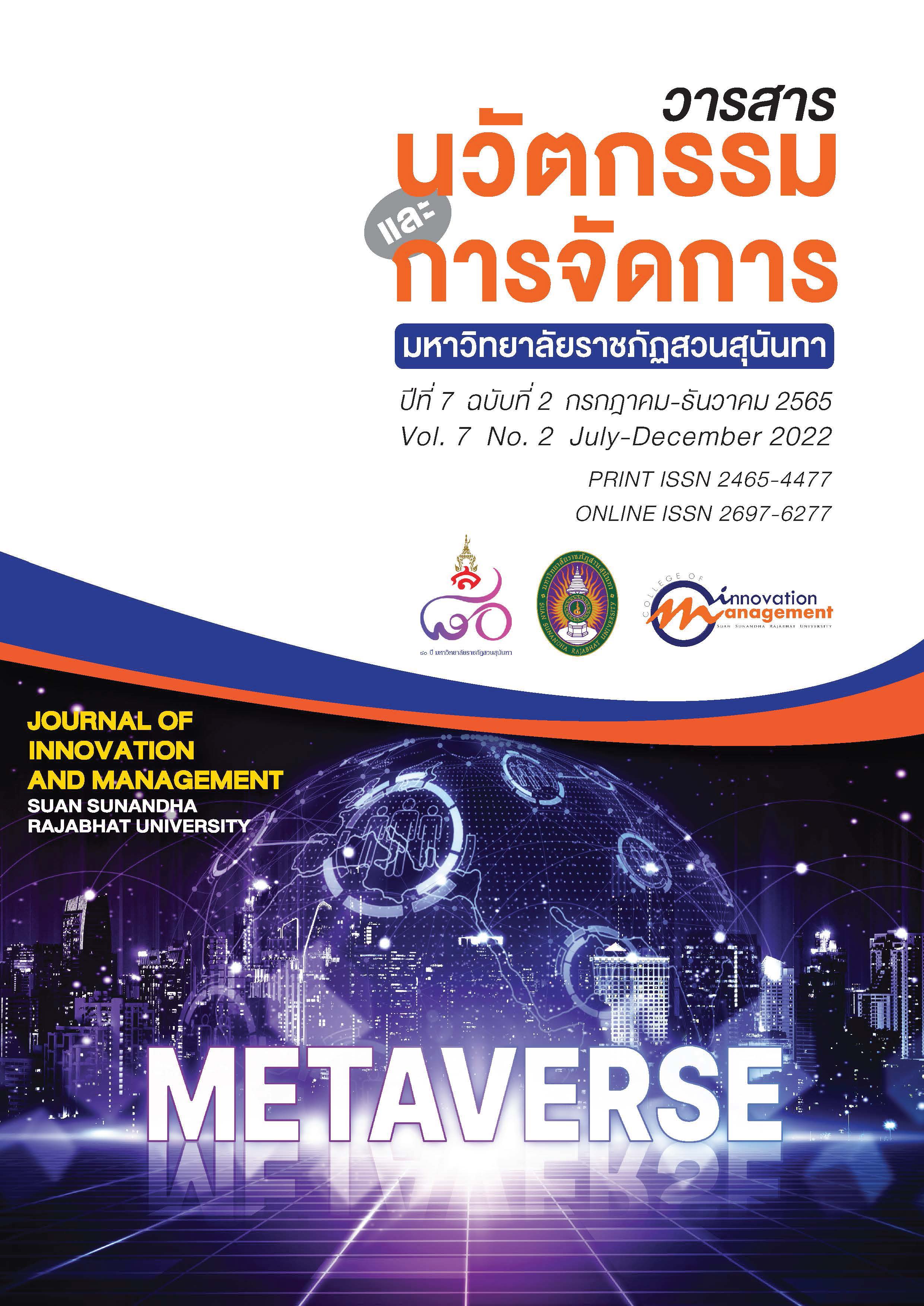The Problems and the Relationship between Factors Related to Cyberbullying Behavior among Lower Secondary School Students in Islamic Private Schools, Bangkok
Keywords:
Cyberbullying, Lower Secondary, Islamic Private SchoolsAbstract
The purpose of this research was to study the problems and to find the relationship between factors related to cyberbullying behavior among Muslim youths. The Mixed Method research was conducted. The quantitative research methodology was used by sending a questionnaire to 9 Islamic private schools in Bangkok by randomly selecting specific schools. The students were selected by using cluster sampling method, distributed in all grades of secondary schools with a population of 621 people. The qualitative method was used by interviewing representative of class teachers and parents. The method for selecting the sample was snowball sampling. The tools used in the research were the selective, estimated questionnaire (Rating Scale) and interview form (Structure In-depth Interview). The results of the research were: Students, Family, Friends, Online social media and Schools were statistically correlated with the cyberbullying behavior of Muslim youth at the 0.05 level. Teachers and parents were also discouraged from acknowledging their students' cyberbullying behavior. Students with such behavior were often children who had a lack of parental affection and family problems. The solution to this problem is admonishing and suggesting the consequences and harms that may arise from this behavior. Parents should be more attentive and spend more time with their family. Teachers and parents will insert their knowledge of self-defense on social networks using the religious principles and teachings of the Prophet Muhammad (SAW) as examples and guidelines for student conduct.
References
Administrator of a charitable Islamic private school. (2013). Characteristics of private Islamic schools. [Online]. Retrieved March, 2021, from: http://islamic-school-admin.blogspot.com/ 2013/04/blog-post.html (in Thai)
Brand Inside. (2017). Stop Bullying Stop online bullying. After Thailand ranked in the top 5 of the world! [Online]. Retrieved March 24, 2018, from: https://brandinside.asia/stop-bullying-thailand-top5/ (in Thai)
Chester, K.L., Magnusson, J., Klemera, E., Spencer, N.H., Brooks, F. (2019). The Mitigating Role of Ecological Health Assets in Adolescent Cyberbullying Victimization. Youth & Society Journal, 51(3), 291-317.
Child and Adolescent Mental Health Rajanagarindra Institute. (2018). Practice manual for prevention and management of bullying in schools. Bangkok: Beyond Publishing. (in Thai)
Cross, D., Barnes, A., Papageorgim, A., Hadwen, K., Hearn, L., and Lester, L. (2015). A social-ecological framework for understanding and reducing cyberbullying behaviors. Aggession and Violent behavior, 23, 109-117.
Department of Mental Health. (2017). Teach children to protect themselves from bullying. [Online]. Retrieved July 11, 2019, from: https:// https://www.thaihealth.or.th/Content/ 39510-teach children to protect themselves from bullying.html (in Thai)
Digital Economy and Society, Ministry. National Statistical Office. (2018) Survey on the use of information and communication technology in the household, 2018. [Online]. Retrieved March 19, 2019, from: www.nso.go.th/sites/2014/DocLib13/ICT/learning technology/2561/ ict61-CompleteReport-Q1.pdf (in Thai)
Johanis, M.A., Bakar, A.R.A., and Ismail, F. (2020). Cyber-Bullying Trends Using Social Media Platform: An Analysis through Malaysian Perspectives. Journal of Physics: Conference Series, 1-5. https://doi.org/10.1088/1742-6596/1529/2/022077
Lekprasern, A. (2015). Violence: An innovative model of reinforcement learning process for the prevention and solution of violence among adolescents and youth in educational institutions. Nakhon Pathom, Faculty of Social Sciences and Humanities, Mahidol University. (in Thai)
Nilan, P., Burgess, H., Hobbs, M., Threadgold, S., and Alexander, W. (2015). Youth, Social Media, and Cyberbullying Among Australian Youth: “Sick Friends”. Social Media + Society, 1-12. https://doi.org/10.1177/2056305115604848
Sittichai, R. (2019). Cyber-bullying behavior of adolescents. Bangkok: Chulalongkorn University Press. (in Thai)
Shuriye, A.O. and Ajala, M.T. (2014). Islam and the Cyber World. Journal of Educational and Social Research, 4(6), 513-520.
Sourander, A., and others. (2010) Psychosocial risk factors associated with cyberbullying among adolescents. ARCH GEN PSYCHIATRY, 67(7), 720-728.
Tudkuea, T., Laeheem, K., and Sittichai, R. (2019). Guidelines for preventive cyber bullying behaviors three southern border provinces students. Journal of Behavioral Science for Development, 11(1), 91–106.
Downloads
Published
How to Cite
Issue
Section
License
Copyright (c) 2022 Journal of Innovation and Management

This work is licensed under a Creative Commons Attribution-NonCommercial-NoDerivatives 4.0 International License.
See Publication Ethics https://so03.tci-thaijo.org/index.php/journalcim/Ethics






